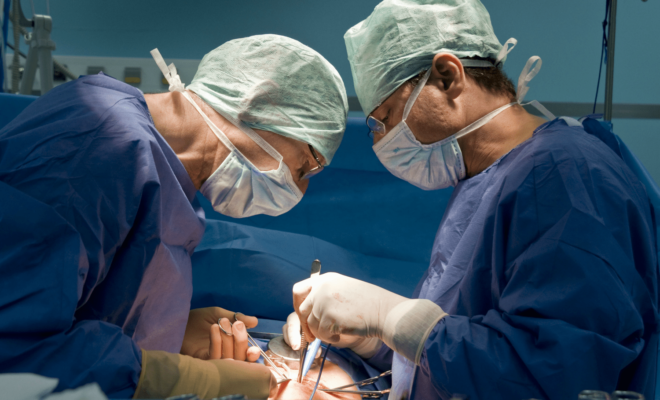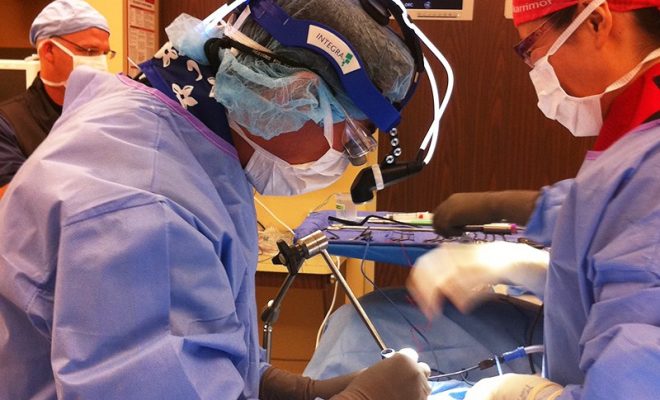Exploring the Benefits of Disc Replacement Surgery over Traditional Spinal Fusion

Joint replacement surgery has become an increasingly common procedure in recent years as more and more people are turning to it for relief from chronic spine pain. However, most joint replacement surgeries still involve traditional spinal fusion—a process where two or more vertebrae are “fused” together by using rods, screws, and/or plates. An alternative method of gaining traction is disc replacement surgery (DRS), which instead of fusing the vertebrae back together with metal hardware, replaces the damaged discs with artificial ones made of medical-grade materials like titanium. Disc replacement surgeries provide many potential benefits over their traditional fusion counterparts that can make life much easier—both during treatment and afterward. Through this blog post we will explore why disc replacement may be a better option for certain patients suffering from chronic spine discomfort than traditional spinal fusions.
Disc replacement surgery and its benefits over spinal fusion surgery
Disc replacement surgery is a modern alternative to spinal fusion surgery and involves replacing a damaged or worn spinal disc with an artificial one. The benefits of disc replacement surgery over traditional spinal fusion surgery are numerous. One of the biggest advantages is that disc replacement surgery allows for more natural motion of the spine, which can greatly reduce the risk of degeneration in adjacent spinal segments. Additionally, disc replacement surgery often results in a faster recovery time, reduced pain, and improved quality of life for patients compared to spinal fusion surgery. For those suffering from chronic back pain, disc replacement surgery can offer a promising option to help alleviate discomfort and improve overall spinal health.
The anatomy of the spine and how disc replacement surgery works to improve it
The spine is an incredibly complex structure that serves as the foundation for our entire body. Made up of 33 vertebrae, it protects the spinal cord while providing support and flexibility to our movements. Unfortunately, conditions such as degenerative disc disease, herniated discs, and spinal stenosis can cause chronic pain that limits mobility and quality of life. In cases where non-surgical treatments have proven ineffective, disc replacement surgery may be recommended. This minimally invasive procedure involves removing the damaged disc and replacing it with an artificial one. With advancements in technology, disc replacement surgery has become a safe and effective means of improving spinal function, restoring range of motion, and reducing pain for those who suffer from spinal conditions.
Common problems associated with traditional spinal fusion surgery
Despite its effectiveness at treating certain spinal conditions such as herniated discs and spinal fractures, traditional spinal fusion surgery is not without its drawbacks. One of the most common problems associated with this procedure is that it can lead to limited mobility and range of motion, as the fused vertebrae become immobile. Additionally, some patients may experience chronic pain and discomfort post-surgery, which can significantly impact their quality of life. To address these issues, many patients are turning to spine disc replacement surgery as an alternative. This innovative procedure aims to replace damaged spinal discs with artificial ones, providing patients with greater flexibility and reduced pain. As with any spine surgery, it is important to carefully weigh the risks and benefits before making a decision.
Understanding the risks associated with disc replacement surgery
When considering spine disc replacement, it’s important to understand the risks and potential complications associated with disc replacement surgery. While the procedure can bring relief from chronic pain and other conditions, there are risks involved such as infection, nerve damage, and additional surgery. The risk of failure or complications is also higher if the patient has other health conditions. Therefore, a thorough evaluation by a qualified healthcare professional is crucial to determine if disc replacement surgery is the best course of action. It’s important to understand all the potential risks and complications to make a fully informed decision. By working closely with a qualified medical provider, patients can better understand the benefits and risks of spine disc replacement.
Exploring the advantages of a quick recovery time after disc replacement
Disc replacement surgery is a common procedure designed to alleviate chronic back pain caused by degenerative disc disease. The prospect of a quick and successful recovery time is an incredibly significant advantage for patients considering this kind of surgery. Shorter recovery periods can help reduce the risk of complications, minimizes the need for extended hospital stays, and leads to a quicker return to normal activities. Moreover, a quicker recovery time means patients can return to work and resume their daily routines faster. The benefits of a quick recovery time after disc replacement surgery are clear, making it an attractive option for many suffering from this type of back pain. It is always important to consult with a doctor to determine whether this surgery is the right choice.
In conclusion, when exploring options for corrective spine surgery, disc replacement surgery can be a viable and beneficial option depending on the individual situation. It is important to speak to your healthcare provider regarding the risks and potential complications associated with this type of surgery. Additionally, having an understanding of the anatomy of the spine and how it relates to disc replacement surgery can allow an informed decision to be made about which route would be best for you. Disc replacement surgery offers a faster recovery time than its counterpart, spinal fusion, allowing patients to get back to their normal activities sooner. Adhering closely to any post-operative instructions given by your surgeon is imperative in order for long-term success, including follow-up visits and physical therapy appointments. Get in touch with your healthcare provider today if you are considering disc replacement surgery so you can make an informed decision about which course of action best fits your unique condition.







